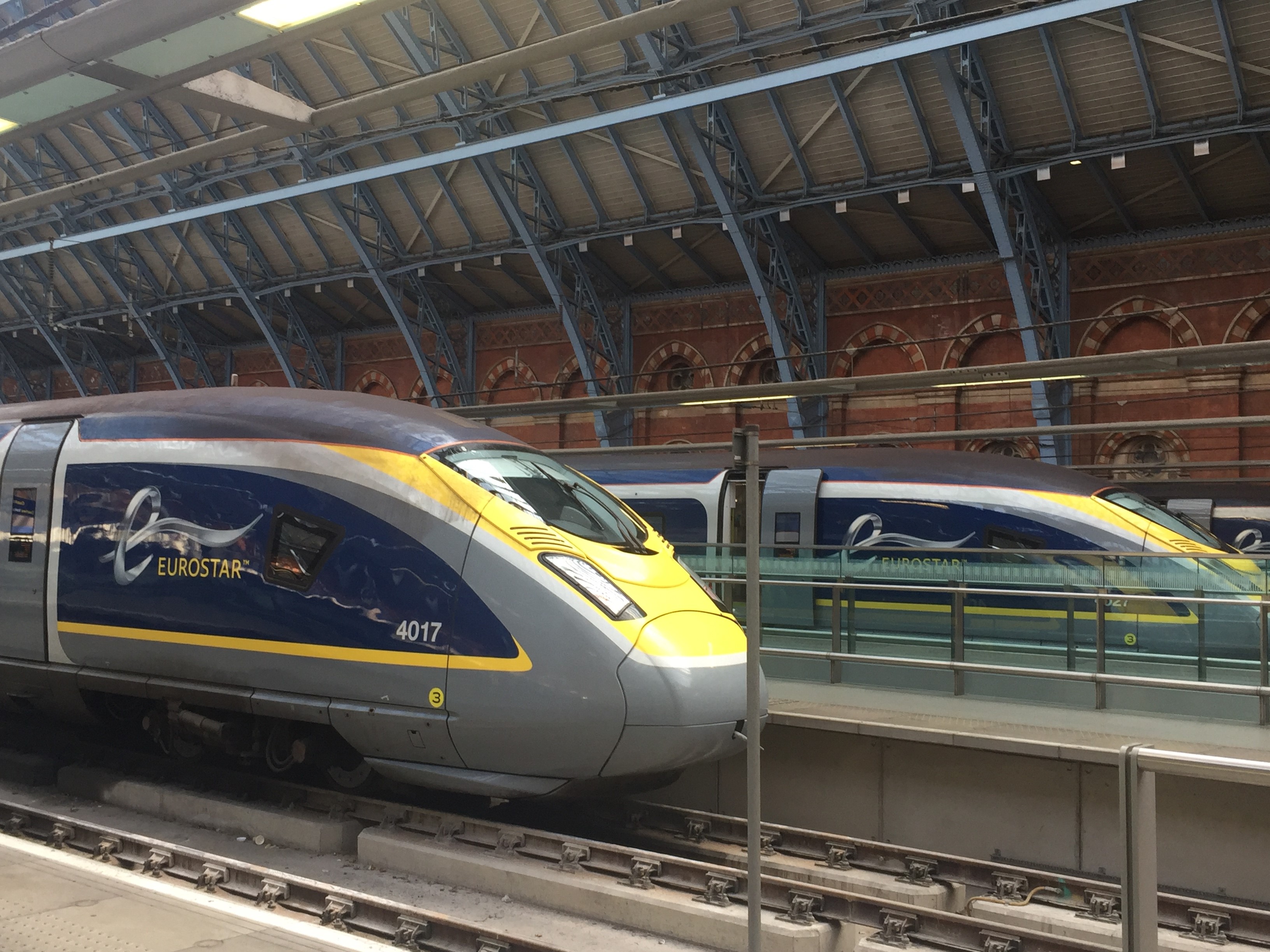Traveling by train for work in Europe
Who should travel by train?
Not everyone can travel be train. It's often more expensive (which makes it hard for people with low incomes). It often takes more time (which can be a problem for young parents). Some health issues make train travel difficult too. But if your life situation makes rail travel an option, why not give it a go ...
If you can travel by train, when should you choose to?
(Note: This section is written from the perspective of living in Sweden).
Begin by asking yourself if the work trip is necessary at all. The carbon footprint of online meetings is almost always less than the carbon footprint of just about any form of travel (plane, car, bus or rail).
For work trips anywhere in Sweden, rail is almost always the best option, not only for reducing your carbon footprint, but also because it is comfortable, convenient and can be cheaper than flying. Indeed, most universities don't even allow you to travel by plane for distances shorter than 700 km (ruling out most journeys within Sweden).
For travel to most European countries, rail is the best option for reducing your carbon footprint, but European rail travel can be challenging. The purpose of this webpage is to make it a little easier.
For travel across oceans, rail is (obviously) not an option, and traveling by plane can be a better option than going by ship because the carbon footprint of ships can be quite large. An important consideration is if a work trip across an ocean can be replaced by a work trip within Europe. This is not always possible, but sometimes it is.
So you want to travel by train for work in Europe …
There are travel agents who can help you with European rail travel. Centralens resebutik Kalmar is a good choice. However, most researchers are required to use the travel agent which has been procured by their university and for most of them, rail travel is an "add on" rather than a mode of travel which they specialize in. If you are required to use one of them, a wise choice is to plan the journey yourself and tell your travel agent exactly what you want ...
This is how do to it:
Step 1: Choose your ticket
One option is to buy tickets for your entire journey from an online travel agent (e.g., Omio or Rome2Rio). This has the advantage of guaranteed connections, but it can be more expensive and and you need to pay more for seat reservations and flexibility. Also, online travel agents often miss the "best" route.
Another option is to buy tickets with German Railways (almost all journeys from Sweden to another European destination will pass through Germany). This has the same advantages and disadvantages as using an online travel agent. An additional issue is that you will need a separate booking to Copenhagen as German Railways cannot book tickets in Sweden.
Often the best option is Interrail. This is often cheaper and definitely more flexible (an Interrail pass is valid on almost all trains). Connections are not guaranteed, but this matters less when one can simply jump on the next train. The main challenge is seat reservations ... (more on that later on) ...
Which pass?
For most work trips, a 4, 5 or 7 days in a month pass is what you need (4 days for northern Europe, 5 or 7 days for southern Europe and the U.K.). There are also 10 or 15 days in 2 months as well as continuous passes (15 or 22 days, 1, 2 or 3 months) which are most often more suitable for leisure trips.
Which class?
First class can be a good option if you are travelling for work. It is a bit (27%) more expensive, but first class carriages tend to be less crowded, and in some countries (e.g., the U.K.) the free food and beverages alone can make a first class pass a good option. Also, with a first class pass, you can reserve seats in first or second class, which can be useful when at busy times. There are often single seats in first class carriages, which can be a good option if you need to work on the train. On the other hand, for leisure trips, second class is completely fine.
How it works?
More or less instantly after buying an Interrail pass, you will be sent an e-mail with your Interrail pass number. Download the Rail planner app, enter your surname, pass number and your passport number, and you are ready to plan your journey ... (Make sure not to activate your pass until you are ready to travel!).
Step 2: Plan your journey
The Man in Seat Sixty-One offers excellent up-to-date guidance about planning journeys to just about anywhere in Europe (and beyond). For European travel, select your starting city and destination city to access step-by-step instructions about how to buy tickets and/or seat reservations, and what to expect on your journey.
Step 3: Make seat reservations
Seat reservations are optional on some trains and required on others. You can find out which trains need seat reservations and either make them or find out where to make them in the Rail planner app. If you can, make seat reservations with the railway company with which you are travelling. This will often give you access to a seat map on which you can select your preferred seat.
In Sweden: Interrail passholders can make a seat reservation and select preferred seats at sj.se: Select the traveler ("Resenär"), click on "Anpassa" and "Reser med periodkort" and choose "Interrail eller Eurail". This will replace the usual ticket price with the price for a seat reservation.
In Denmark: Interrail passholders can make a seat reservation (and accept an assigned seat) at https://www.dsb.dk/en/train-ticket-to-europe/. Click on "Buy your international seat reservation".
In Germany and for much of Europe: Interrail passholders can make a seat reservation and select preferred seats (on German trains) at bahn.de. Click on "Book seat only".
For other European countries: Check the Rail planner app for guidance.
What about overnight trains?
Here are a few railway companies who operate sleepers in Europe:
SJ and Snälltåget operate night trains between Sweden and Germany.
OBB Nightjet (Austrian Railways) operate night trains between Germany, Austria, Switzerland and Italy.
Caledonian Sleepers operate night trains between Scotland and England.
For more options: https://www.seat61.com/sleepers.htm
Sleeper, couchette or seat?
Sleeper: A bit like a (very small) hotel room. There are 1-3 bunkbeds and one can usually pay more for single occupancy.
Couchette: A bit like a (very small) hostel room with 4-6 bunkbeds.
Seat: If you want to be miserable, why not fly?
What to do if things go wrong?
Most importantly, prevention is better than the cure, i.e., plan realistic connections. What this means is:
at least 30 minutes
45 minutes for Germany
1 hour if it really matters
2 hours for Eurostar
If you miss a connection ...
If you have a through ticket: Get on the next train. You are covered by CIV missed connection protection.
If you have separate tickets: Talk to the staff on the delayed train and the onward train operator. You might be covered by the Agreement on Journey Continuation.
If you are using Interrail: Make a new seat reservation if required (or desired) and get on the next train.
Read more here:
https://www.seat61.com/european-train-travel.htm#if-things-go-wrong

